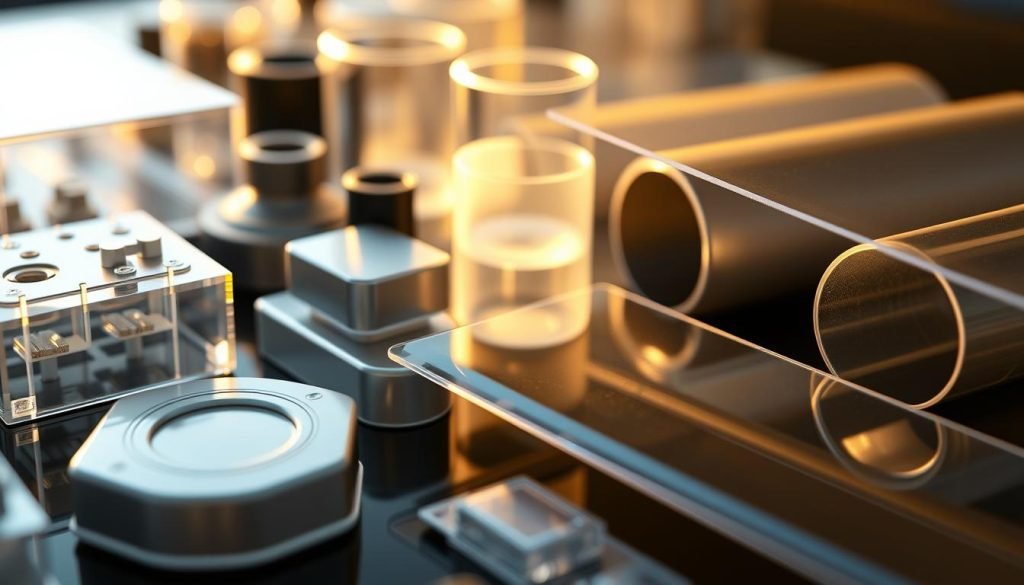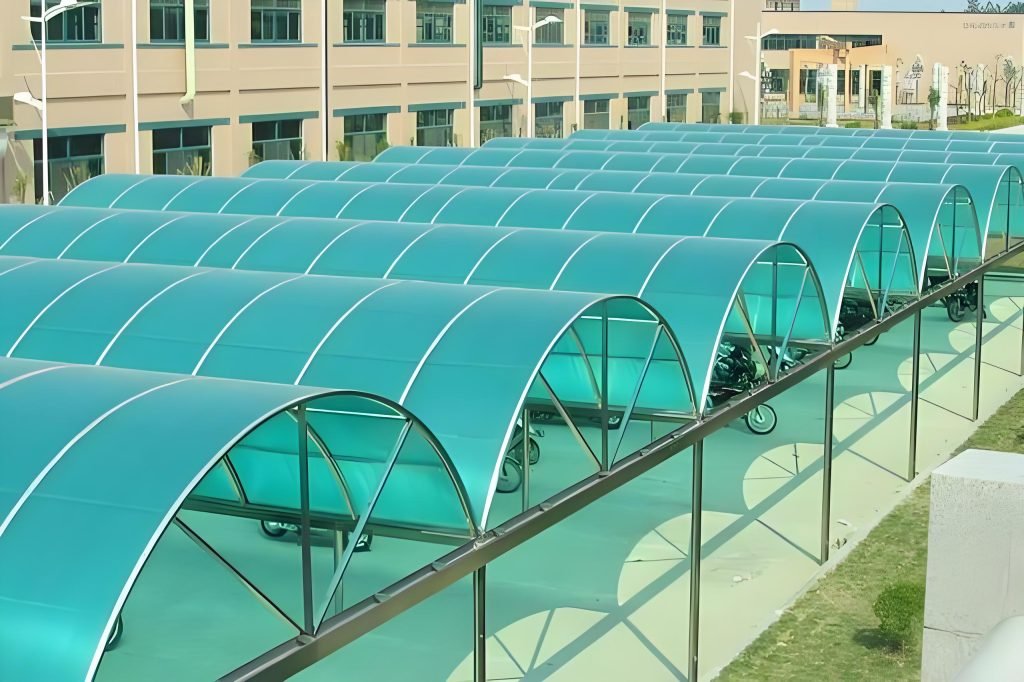Introduction to UV Resistant Plastics for Injection Molding Projects
When plastic parts live outside, light-driven chemistry defines how long they last. Polymers exposed to radiation and sun rays can suffer photodegradation that shows up as chalking, yellowing, and loss of impact and tensile strength.
Manufacturers often list expected service years or rate materials as low, moderate, or high for outdoor use. Those labels are only a guide. Local solar intensity, temperature swings, and installation conditions change real-world performance.
Almost no material is fully immune. Most rely on additives or stabilizers, and protective caps or coatings can shield the surface. Design choices—like wall thickness, color, and surface finish—also affect how a molded part weathers.
In the sections ahead you’ll see which materials and additives suit common applications. That context helps you set validation tests and pick the right combination of materials and processing for longer outdoor life.
Beneficial Properties and How to Improve UV Resistance in Plastics

Light-driven damage can turn a clear part cloudy and cut its impact strength in just months. Photodegradation shows as yellowing, chalking, and loss of tensile strength that makes a molded piece brittle over time.
What sun and radiation do to polymers
Radiation breaks polymer chains. That reduces elongation and lowers impact and strength. Color shifts and surface chalking also harm appearance and function.
Key outdoor performance traits
You should target impact resistance, tensile strength, transparency when needed, and heat tolerance. Those properties define service life and how often parts need replacement.
Additives and processing tips
Three additive groups help: blockers like carbon or titanium dioxide that screen rays, absorbers such as benzophenones and benzotriazoles that convert incoming energy, and stabilizers (HALS) that stop free-radical chain reactions.
Use caps or clear coatings to protect the base polymer. Design tactics—uniform wall sections, ribs to reduce stress, and considered color choices—also slow degradation and extend useful time.
Balancing clarity and durability
To keep transparency, pair absorbers with clear grades or accept a slight tint to preserve optical performance. That trade-off often yields longer life without sacrificing needed clarity.
UV Resistant Plastics: The 5 Best Options for High UV Resistance
Choosing a material for long-term outdoor use starts with knowing trade-offs in clarity, toughness, and cost. Below are five top choices and quick notes to help you pick the best option for your injection molding application.
Acrylic (PMMA)
Acrylic gives standout transparency and stable appearance with as little as ~3% degradation over a decade outdoors. It resists scratches but is brittle, so avoid structural loads.
High-Density Polyethylene (HDPE)
HDPE is a tough, colorfast plastic that resists chemicals and graffiti. It’s common in playground equipment and outdoor furniture because it breaks bluntly and stays durable.
Polycarbonate (PC)
Polycarbonate delivers very high impact strength and good transparency. Use PC for shields, safety windows, and impact-prone parts where temperature swings occur.
Polyamide-Imide (PAI)
PAI blends nylon and polyimide traits for a high melting point, stiffness, and chemical resistance. It suits demanding applications but may need post-curing for peak performance.
PVDF
PVDF offers exceptional resistance to sun, chemicals, and heat. Homopolymer grades give higher stiffness and deflection, while copolymers boost impact and stress-crack resistance for seals and gaskets.
What Factors Matter in UV-Resistant Plastics Selection
Start by mapping what the part must survive in the field before you pick a material. Match service conditions, budget, and expected lifetime to material properties so your components meet real needs.
Impact and structural performance
Decide whether the part must absorb shocks, carry loads, or resist fatigue. Materials with high impact toughness prevent cracks and reduce failure risk under radiation and repeated stress.
Design geometry and wall thickness to lower stress concentrators. That simple move extends service life more than swapping materials alone.
Optical needs
Balance clarity with durability for lenses, shields, and light fixtures. Some formulations keep transparency longer; others work best with a light tint or surface coating to block sun-driven aging.
Weather and chemical resistance
Consider temperature swings, moisture, oils, and solvents in the product’s environment. Choose materials proven against those exposures to avoid swelling, crazing, or loss of strength.
Processing window and cost
Factor in melt temperature, mold requirements, and cycle time. Higher-performance materials can raise tooling and cycle costs but often lower warranty and maintenance spend over the product life.
Evaluate total lifecycle value: upfront material and tooling cost versus expected years of service, warranty risk, and maintenance intervals. That balance is the key point in making the right choice for your application and product components.
Popular Applications for UV Resistant Plastics
Common outdoor applications reveal clear patterns in which materials perform best for look, safety, and service life.

Outdoor furniture and playground equipment
For benches, play structures, and other outdoor furniture you want colorfast, durable materials that fail safely under impact. HDPE is a popular choice because it keeps color, resists chemicals, and breaks bluntly instead of shattering.
Glazing, signage, and light lenses
When transparency and light stability matter, acrylic is often used for signs and lenses. Polycarbonate serves where impact resistance is critical, such as shields and safety windows. Choose finishes to reduce scratches and preserve optical quality.
Automotive and industrial components
Automotive housings, gaskets, seals, and piping mix needs: PC works well for protective covers, PVDF is common for fluid-handling components, and acrylic fits parts where clarity leads. Match material resistance to expected sun and radiation exposure and plan cleaning and maintenance cycles to keep products performing longer.
UV Resistant Plastics Injection Molding Services from Fecision
Fecision helps you turn outdoor design goals into injection-molded parts that last in real field conditions. We pair design, materials, and testing so your product meets duty cycles in used outdoor applications.
Design for manufacturability under sun exposure
We optimize walls, ribs, and flow to cut warpage and stress that speed photodegradation. Uniform sections and balanced gates reduce hotspots and preserve strength over years in the sun.
Material selection and sourcing
Your team gets a tailored mix of additives and stabilizers to fit the application. We choose blockers like carbon, absorbers and HALS alongside base materials such as PC, PVDF, HDPE, acrylic, or PAI.
Tooling, finishing, and validation
Tooling specs include surface texture or glossy finishes and optional caps or coatings to boost resistance and durability for outdoor components and equipment.
We run accelerated radiation and environmental tests to map lab cycles to years in the field. You receive process validation and PPAP-ready documentation so your product ships with confidence.
Conclusion
Selecting the proper polymer and additives will extend service life for your outdoor parts. Use blockers, absorbers, and HALS alongside coatings to cut damage from radiation and rays and improve long-term resistance.
For optical needs, acrylic keeps clarity. For rugged transparency, polycarbonate balances impact and view. Nylon blends and PAI bring strength and a high melting point for demanding engineering tasks, while HDPE serves utility and safety roles.
Match materials to the real application, weigh lifecycle cost, and test for heat and weather over time. When you need help specifying compounds, tooling, or validation, Fecision can partner with you to launch a reliable product that lasts.




